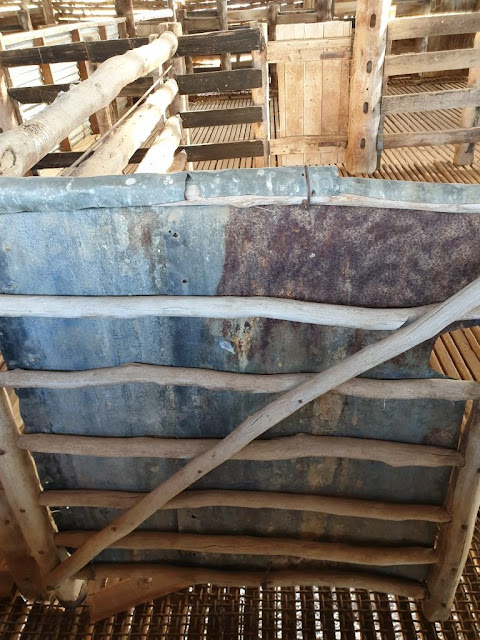We had a great overnight stay in our simple but stylish number 4 cabin at Mungo Lodge. The beds were perfect, the starry night sky was clear and never ending and this is what we woke to on Friday morning - everything perfectly quiet and so still ...........
Our Mungo package included an early (ish) morning tour of Mungo's much more recent pastoral heritage - starting with a visit to the remains of the old Zanci Station....... Zanci was established after 1921 under the ill-fated soldier settler scheme. In this part of Western NSW, the original much larger Gol Gol station (established 1861) was broken up into 5 smaller blocks for veterans returning from WW1, including Zanci and Mungo Stations which were alongside each other - on the ancient lake bed.
Not much of Zanci homestead remains to this day....
although the outhouse (dunny) looks to be in good repair still...
old and new versions of the tankstand......The original barn building for Zanci ....
.. and the old shearing shed, which was built from a section of the much larger Mungo Station woolshed in 1922, when the smaller soldier settler blocks were established.
We returned to the Visitor Centre area to look over the still magnificent old Mungo Station woolshed (built in 1869 from termite resistant local White Cypress Pine logs by Chinese labourers). 

Our guide, Greg, really brought the woolshed alive for us with his vivid descriptions of shearing times, with 30 shearers working across 30 pens with hand shears and teams of sheepo's, rouseabouts, wool classers and balers. Before the property was divided up after WW1, up to 50,000 sheep would be shorn in this beautiful old shed.
Mungo Station was sold to the National Parks and Wildlife Service in 1978 and Mungo National Park was created in 1979. The adjoining Zanci block was sold to the NPWS and added to the park in 1984.
We ended our tour at the Mungo Meeting Place near the Visitors Centre, a place where Mungo's Aboriginal people can gather as a community. The Meeting Place has been thoughtfully designed and features a recreation of part of the human fossil tracks that were rediscovered in the park in 2003. The footprints record some moments, frozen in time from the lives of an Aboriginal family and a group of hunters around 20,000 years ago (the largest set of ice age footprints in the world). The real footprint fossils have been covered over with a bed of sand - and are in a secret location, free from further interference...
We ended our tour at the Mungo Meeting Place near the Visitors Centre, a place where Mungo's Aboriginal people can gather as a community. The Meeting Place has been thoughtfully designed and features a recreation of part of the human fossil tracks that were rediscovered in the park in 2003. The footprints record some moments, frozen in time from the lives of an Aboriginal family and a group of hunters around 20,000 years ago (the largest set of ice age footprints in the world). The real footprint fossils have been covered over with a bed of sand - and are in a secret location, free from further interference...
Our visit to Mungo National Park has been wonderful - an unforgettable experience!


















No comments:
Post a Comment